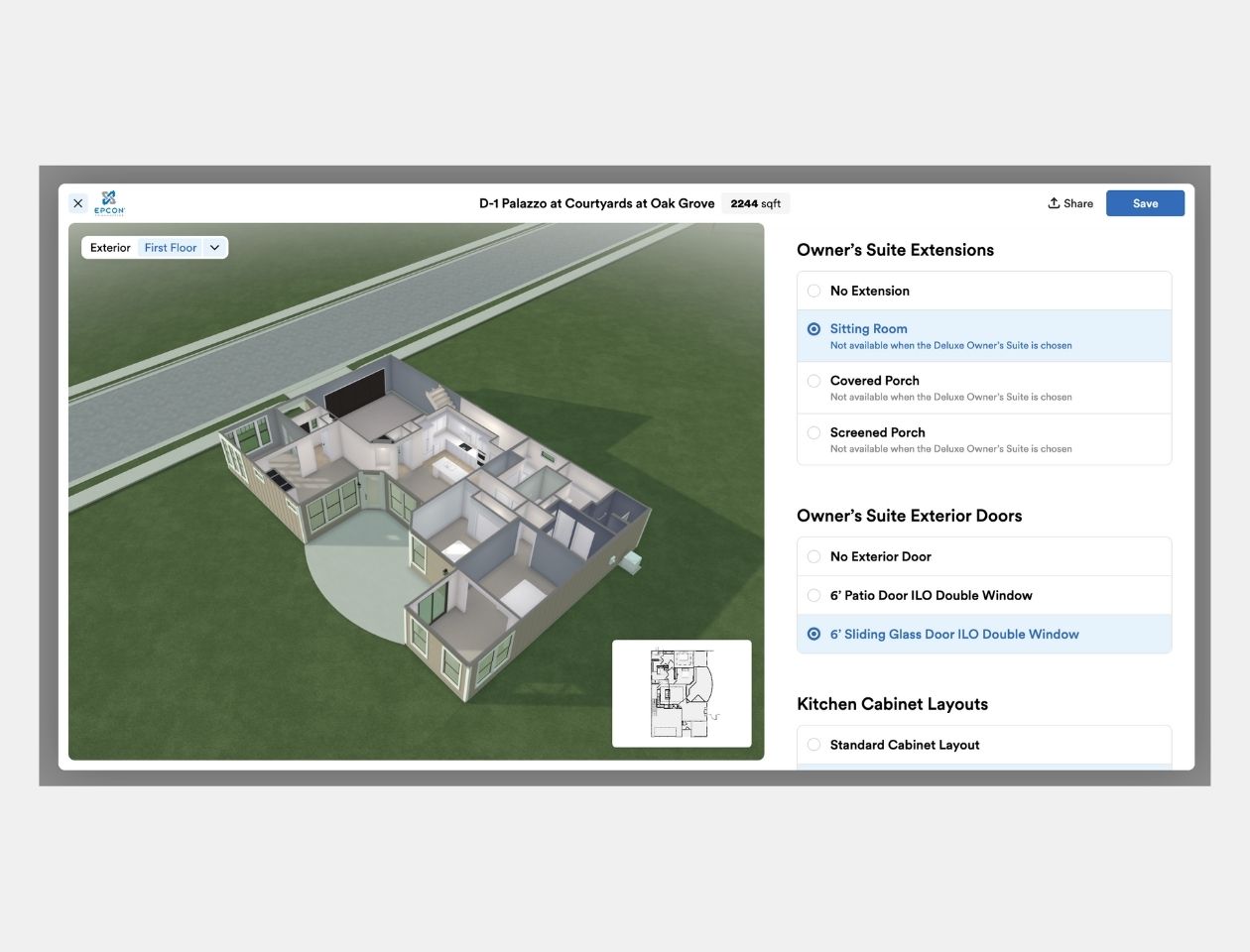Personalization plays a pivotal role in creating a memorable and meaningful customer experience. While customization has long been a focus, it often clashes with efficiency and profitability. Instead, builders must shift their focus to personalization—understanding the unique needs and preferences of each buyer to craft a tailored experience that still fits within an efficient framework.
The Difference Between Customization and Personalization
Customization involves making one-off changes that deviate from a standard process or product. While this can appeal to buyers seeking uniqueness, it is often the enemy of efficiency and profit. Repeatedly reinventing the wheel leaves little room for refinement and optimization. On the other hand, personalization is about tailoring the experience and guiding buyers through the process in a way that feels uniquely theirs. This approach balances operational efficiency with customer satisfaction.
“If we do everything for the first time, we’re not going to do it as well as we could if we repeated the process. However, if we repeat the process too rigidly, people don’t feel like it’s their own.” - Shant Samtani
Personalization bridges this gap by offering buyers an experience that aligns with their needs and aspirations without compromising efficiency.
The Psychological Foundation of Personalization
At its core, personalization hinges on a fundamental psychological principle: people make decisions based on the clarity of expected outcomes. As Jeff Shore explains, “When there is greater clarity of the expected outcome, certainty goes up, and with that, confidence follows.” Builders must guide buyers toward that clarity, helping them visualize not just the features of a home but its livability.
Moving Beyond Features to Livability
Instead of focusing on a home’s features, builders should guide buyers to imagine how they will live in the space. For instance:
- Asking Thoughtful Questions: Questions like “Where does the dog sleep?” or “Where will you put the Christmas tree?” help buyers mentally “move in” and imagine their life in the home.
- Encouraging Personal Visualization: Allowing buyers to visualize their furniture in a model home, either physically or through virtual tools, personalizes the experience.
When buyers think about how the home will meet their unique needs, it creates a sense of ownership, reducing uncertainty and building confidence.
The Role of Technology in Personalization
Technology offers powerful tools to enhance personalization. For example:
- Virtual and Augmented Reality: These tools allow buyers to explore floor plans and visualize customizations without leaving their homes.
- Data-Driven Insights: CRM systems can help sales teams track buyer preferences and tailor their communication accordingly.
- Interactive Design Tools: While customization isn’t the focus, providing options within a structured framework—like choosing finishes or layouts—lets buyers feel involved in the process.
.gif)
However, technology alone isn’t enough. It must be paired with genuine human interaction to create a seamless, personalized experience.
Shifting the Sales Mindset
For many sales teams, transitioning from feature-focused selling to personalized selling requires a mindset shift. Shant Samtani shared that he had to untrain his team from feature dumping, “We loved to tell our builder story and list included features, but who cares? All that matters is what matters to the buyer.”
Questions-Only Selling
An effective way to foster this shift is through a technique called questions-only selling. For a day or two, salespeople focus solely on asking open-ended questions. This approach allows buyers to guide the conversation, revealing their priorities and concerns. The less you say, the more they hear. This method trains salespeople to listen actively and respond to buyers’ needs rather than pushing a predetermined agenda.
Practical Steps for Personalizing the Process
- Listen Actively: Pay attention to what matters most to the buyer and tailor the conversation accordingly.
- Ask Engaging Questions: Questions about lifestyle, routines, and family needs help buyers visualize their lives in the home.
- Guide the Experience: Use interactive tools and visualization exercises to create a sense of ownership.
- Focus on Clarity: Ensure every step of the process is clear and straightforward, reducing uncertainty and boosting confidence.
Building a Better Buyer Experience
Ultimately, personalization is about understanding the buyer and helping them see themselves in the home. By focusing on livability, leveraging technology, and fostering meaningful conversations, builders can create an experience that feels uniquely tailored to each buyer. This approach not only builds trust and confidence but also strengthens the builder’s reputation as a customer-centric organization.
“When buyers gain clarity, they gain certainty. When they gain certainty, they gain confidence. That’s how you build the sale.” - Jeff Shore
See higharc in action
Discover how Higharc can empower your team to conquer change, modernize your buyer experience, and decrease cycle times.
Book a demo


.png)




.png)



.jpg)







%20(1260%20x%20960%20px).jpg)
%20(1260%20x%20960%20px).jpg)

.jpg)

.jpg)



















